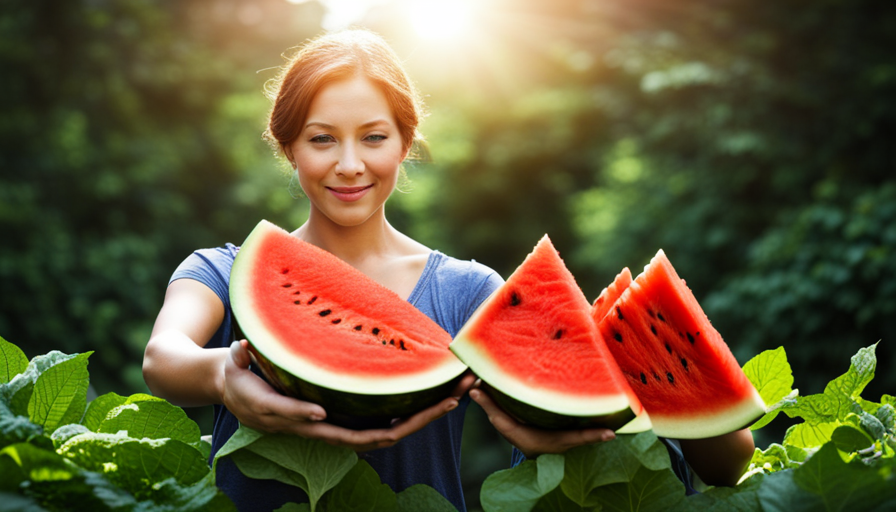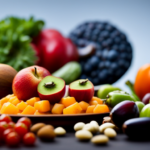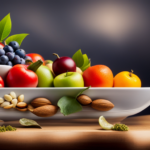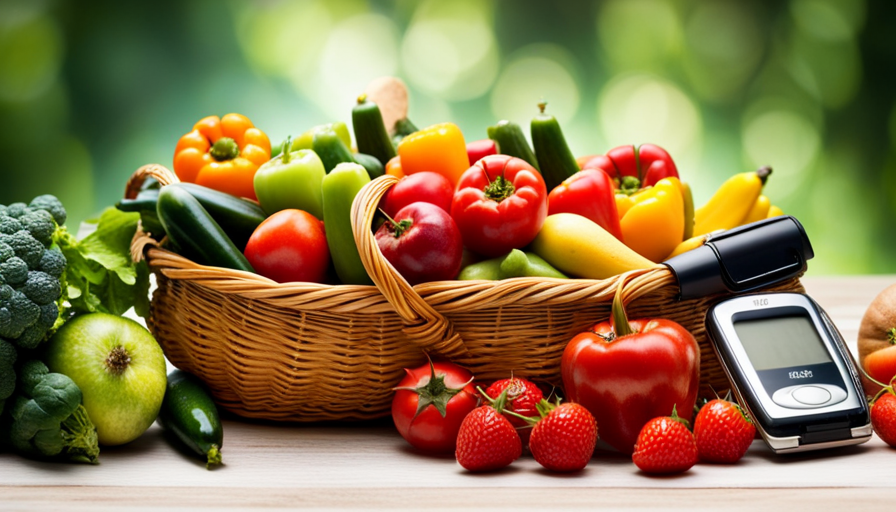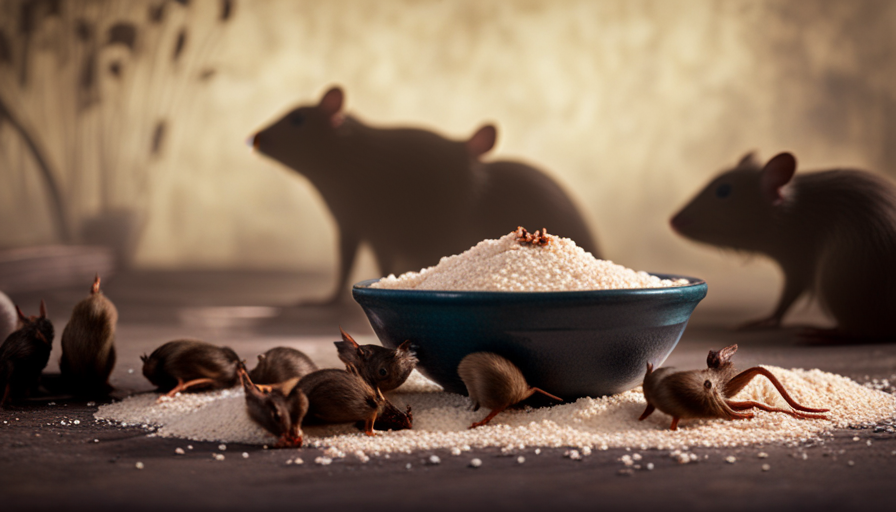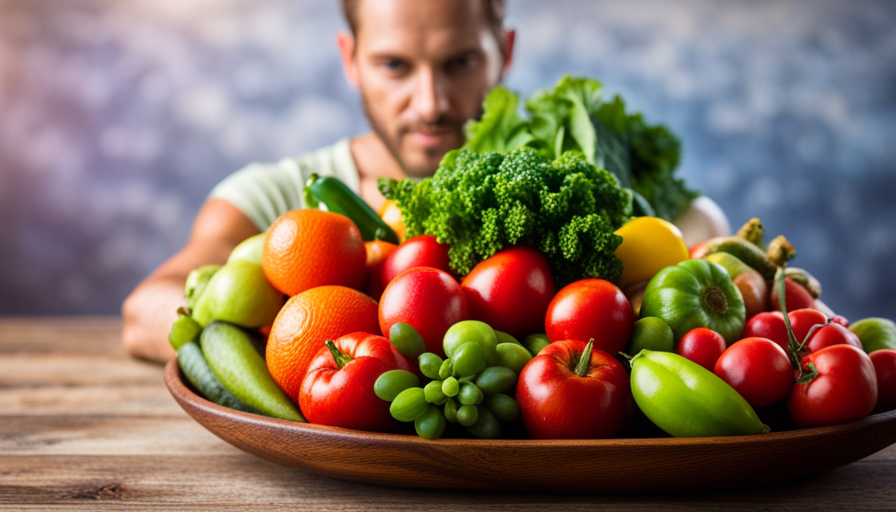Picture a world where our plates are overflowing with colorful, raw foods packed with nutrients and energy. A place where our bodies flourish on the natural goodness of the Earth’s offerings.
Welcome to the fascinating world of raw foodism. A raw foodist is someone who solely consumes unprocessed, uncooked, and organic plant-based foods. It is a lifestyle rooted in the belief that heat can strip away essential nutrients and enzymes in food, resulting in diminished health.
As a raw foodist, I have experienced firsthand the transformative power of this diet. In this article, I will delve into the principles of a raw food diet, the myriad health benefits it offers, and the potential challenges one may encounter on this path.
I will also provide you with delicious raw food recipes and meal ideas, explore the environmental benefits of raw foodism, and discuss its implications for sustainability.
So, if you’re curious about embracing a life fueled by the raw power of nature, join me on this enlightening journey.
Key Takeaways
- A person who only eats raw food is called a raw foodist or a raw vegan.
- Raw foodism is a lifestyle that involves consuming unprocessed, uncooked, and organic plant-based foods.
- Raw foodists experience numerous health benefits, including improved digestion, enhanced overall well-being, and reduced risk of chronic diseases.
- Challenges of a raw food diet include careful meal planning, limited food options when dining out or attending social events, and the need to prioritize food safety and hygiene.
Definition of Raw Foodism
A raw foodist is someone who solely indulges in the pure and uncooked nourishment of nature’s finest offerings. The raw food diet consists of consuming only raw, unprocessed, and plant-based foods. This includes fruits, vegetables, nuts, seeds, and sprouted grains.
The main principle behind this diet is that heating food above 104-118 degrees Fahrenheit destroys essential enzymes and nutrients, leading to a loss of their health benefits.
There are numerous benefits associated with a raw food diet. Firstly, it’s rich in vitamins, minerals, and antioxidants, which can boost the immune system, improve digestion, and enhance overall well-being. Additionally, raw foods are typically low in calories and high in fiber, making them an effective way to manage weight and maintain a healthy body. Moreover, the diet can reduce the risk of chronic diseases such as heart disease, diabetes, and certain types of cancer.
However, it’s important to note that there are challenges associated with a raw food diet. It requires careful meal planning and preparation to ensure a balanced nutrient intake. Raw foodists may also face social challenges and limited food options when dining out or attending social events.
Despite these challenges, the benefits of a raw food diet make it an appealing choice for those seeking a natural and nutrient-rich lifestyle.
Transitioning from the definition of raw foodism, let’s now explore the principles of a raw food diet.
Principles of a Raw Food Diet
When it comes to following a raw food diet, there are several key principles to keep in mind. First and foremost, raw food preparation techniques are essential to preserving the integrity of the ingredients and maximizing their nutritional value.
Secondly, using fresh and organic ingredients is of utmost importance to ensure that you’re consuming the most nutrient-dense foods possible.
Lastly, understanding the raw food nutrition and ensuring a well-balanced diet is crucial for meeting your body’s nutritional needs.
By adhering to these principles, you can make the most out of your raw food journey and reap the numerous health benefits associated with this lifestyle.
Raw Food Preparation Techniques
Although it may seem unconventional, individuals who solely consume raw food have developed sophisticated techniques for preparing their meals. Raw food preparation involves unique methods that prioritize food safety and meal planning. By following these techniques, raw food enthusiasts ensure that their meals are not only nutritious but also safe to consume.
One important aspect of raw food preparation is ensuring the safety of the ingredients. Raw foodists are aware of the potential risks associated with consuming raw foods, such as foodborne illnesses. Therefore, they take extra precautions by thoroughly washing fruits and vegetables, soaking nuts and seeds, and using high-quality water sources.
Additionally, raw food meal planning plays a crucial role in the preparation process. Raw foodists carefully select a variety of ingredients to ensure they receive a well-rounded nutritional profile. They also consider the seasonality and availability of fresh produce to create diverse and flavorful meals.
Incorporating a 2 column and 5 row table:
| Raw Food Safety | Raw Food Meal Planning |
|---|---|
| Thoroughly wash fruits and vegetables | Select a variety of ingredients |
| Soak nuts and seeds | Consider seasonality and availability |
| Use high-quality water sources | Create diverse and flavorful meals |
Transitioning into the next section about the importance of fresh and organic ingredients, it is crucial for raw food enthusiasts to prioritize the quality of the ingredients they use.
Importance of Fresh and Organic Ingredients
To truly savor the full benefits of a raw food diet, nothing compares to the vibrant flavors and nourishment that fresh, organic ingredients bring to the table. The freshness of these ingredients not only enhances the taste but also ensures that you’re getting the maximum health benefits from your raw food meals.
Fresh produce is packed with essential vitamins, minerals, and enzymes that can be compromised in cooked foods. Organic ingredients, on the other hand, are free from harmful pesticides and chemicals, making them a safer and healthier choice.
Incorporating fresh and organic ingredients into your raw food diet can help boost your immunity, improve digestion, and increase energy levels. Transitioning into the subsequent section about raw food nutrition, it’s important to understand the specific nutrients that can be obtained from raw food sources.
Raw Food Nutrition
Now, let’s delve into the nutritional benefits of incorporating raw food into your diet. Raw food recipes aren’t just delicious, but they also provide numerous health benefits. When you consume raw food, you’re getting a wide range of essential nutrients that can promote optimal health.
Raw fruits and vegetables are packed with vitamins, minerals, and antioxidants that are often lost during cooking. Additionally, raw food is rich in fiber, which aids in digestion and promotes a healthy gut.
Incorporating raw food into your diet can also help increase energy levels, improve skin health, and support weight loss. The raw food diet benefits go beyond just nutrition, as it can also reduce the risk of chronic diseases and boost overall well-being.
With all these amazing benefits, it’s no wonder that raw foodism has gained popularity in recent years. Transitioning into the subsequent section about the health benefits of raw foodism, let’s explore how it can improve our overall well-being.
Health Benefits of Raw Foodism
Eating a raw food diet can be a transformative journey towards improved health and vitality. Raw foodism has been linked to numerous health benefits, including weight loss and improved digestion. Here are five key advantages of embracing a raw food lifestyle:
-
Enhanced nutrient intake: Raw foods are packed with essential vitamins, minerals, and enzymes that can support optimal health and wellbeing.
-
Increased energy levels: Raw foodism can provide a natural energy boost, as consuming fresh, unprocessed foods allows the body to efficiently utilize nutrients.
-
Improved digestion: Raw foods are rich in fiber, which aids in digestion, promotes regular bowel movements, and supports a healthy gut microbiome.
-
Reduced inflammation: A raw food diet is often associated with decreased inflammation levels, which can alleviate symptoms of chronic conditions and promote overall wellness.
-
Weight management: Many individuals find that adopting a raw food diet can lead to weight loss, as raw foods tend to be low in calories and high in water content.
As with any dietary change, there are potential challenges and considerations to keep in mind. However, by understanding the benefits of raw foodism and taking steps to overcome obstacles, one can embark on a rewarding journey towards better health and wellbeing.
Potential Challenges and Considerations
When it comes to following a raw food diet, there are several potential challenges and considerations to keep in mind.
The first is meeting nutritional needs, as a raw food diet may be lacking in certain essential nutrients like protein and vitamin B12.
Secondly, food safety and hygiene can be a concern when consuming raw foods, as they may contain harmful bacteria or parasites.
Lastly, social and practical challenges can arise, such as difficulties dining out or attending social events where raw food options may be limited.
Meeting Nutritional Needs
Ensure you’re getting all the necessary nutrients by considering different ways to meet your nutritional needs. When following a raw food diet, it’s important to be mindful of potential challenges and considerations to maintain a balanced diet.
Here are four key strategies to help you meet your nutritional needs:
-
Include a variety of fruits and vegetables: These are rich in vitamins, minerals, and antioxidants that are essential for optimal health.
-
Incorporate plant-based protein sources: Legumes, nuts, and seeds are excellent sources of protein, which is essential for muscle growth and repair.
-
Consume healthy fats: Avocados, coconut oil, and nuts provide essential fatty acids that support brain function and cardiovascular health.
-
Consider supplements: While a raw food diet can provide many nutrients, it may be beneficial to supplement with vitamin B12, iron, and omega-3 fatty acids.
By following these strategies, you can ensure you’re meeting your nutritional needs while adhering to a raw food diet.
Now let’s transition into the next section about food safety and hygiene.
Food Safety and Hygiene
Maintaining proper food safety and hygiene is crucial when following a raw food diet, as it can prevent the risk of foodborne illnesses. For example, a recent study found that improper handling of raw fruits and vegetables led to a significant increase in cases of E. coli contamination.
To ensure food safety while consuming raw food, it’s essential to follow specific guidelines. First, always wash your hands thoroughly with soap and water before handling any raw ingredients. Additionally, make sure to thoroughly wash all fruits and vegetables under running water to remove any dirt or bacteria. It’s also important to store raw food separately from cooked food to avoid cross-contamination.
Following these proper food handling practices will help minimize the risk of foodborne illnesses associated with a raw food diet.
Moving on to the social and practical challenges of this dietary choice…
Social and Practical Challenges
Despite the potential social and practical challenges, adhering to a raw food diet can be a rewarding and fulfilling lifestyle choice.
When it comes to social challenges, dining out with friends and family can be difficult. Many restaurants do not offer a wide range of raw food options, and explaining your dietary needs to others may lead to misunderstandings or even judgment. Additionally, attending social gatherings where cooked food is the norm can be challenging, as you may feel left out or have to bring your own raw food alternatives.
On the practical side, meal preparation can be time-consuming and require careful planning. Raw food diets often involve soaking, sprouting, and dehydrating ingredients, which can be a hassle for those with busy schedules. However, with a little creativity and resourcefulness, these challenges can be overcome, and the benefits of a raw food diet can far outweigh the difficulties.
By incorporating a variety of fruits, vegetables, nuts, and seeds, you can create delicious and nourishing meals that will satisfy your taste buds and support your overall health and well-being.
Transitioning into the next section about raw food recipes and meal ideas, let’s explore some exciting ways to incorporate raw ingredients into your daily meals.
Raw Food Recipes and Meal Ideas
When it comes to raw food, there are endless possibilities for creating delicious and nutritious meals.
Raw salads and dressings offer a wide range of flavors and textures, combining fresh vegetables, fruits, and herbs with homemade dressings.
Raw smoothies and juices are a great way to pack in nutrients and hydrate the body, blending together fruits, vegetables, and superfoods for a refreshing and energizing drink.
And for those with a sweet tooth, raw desserts and snacks provide guilt-free indulgence, using natural sweeteners and raw ingredients to create decadent treats.
With these options, incorporating raw food into your diet can be both satisfying and nourishing.
Raw Salads and Dressings
To truly embrace the vibrant world of raw salads and dressings, you’ll discover a kaleidoscope of flavors that dance on your taste buds like a symphony of freshness.
Raw salads offer a multitude of benefits for those who choose to eat raw food. They’re packed with essential nutrients, enzymes, and antioxidants that are often lost during the cooking process. Raw vegetables and fruits are also low in calories, making them an excellent choice for weight management. Additionally, raw salads can aid in digestion and promote optimal gut health.
Some challenges of consuming raw food include the need for careful food handling to prevent contamination and the potential difficulty in obtaining certain nutrients like vitamin B12. But fear not, because in the next section about raw smoothies and juices, we’ll explore delicious ways to address these challenges.
Raw Smoothies and Juices
Indulging in raw smoothies and juices will whisk you away to a world of refreshing flavors and vibrant nutrition. Raw smoothies are a fantastic way to pack in a variety of fruits and vegetables into one delicious drink.
From green smoothies with kale and spinach to tropical smoothies with mango and pineapple, the possibilities are endless. Experimenting with different raw smoothie recipes allows you to explore new flavors and discover your personal favorites.
In addition to their taste, raw smoothies also offer numerous health benefits. Juicing fruits and vegetables helps to retain their natural enzymes, vitamins, and minerals, which can be lost during cooking. This means that you’re getting a concentrated dose of nutrients in every sip. Raw smoothies also provide a great source of hydration and can aid in digestion.
Transitioning into the next section, let’s move on to the delightful world of raw desserts and snacks.
Raw Desserts and Snacks
After enjoying a refreshing raw smoothie or juice, it’s time to satisfy your sweet tooth with some delicious raw desserts and snacks.
Raw food enthusiasts know that healthy eating doesn’t mean sacrificing taste. Raw desserts, such as raw chocolate mousse or raw fruit tarts, are made with nutrient-dense ingredients like nuts, dates, and cacao, providing a guilt-free indulgence.
Raw snacks like kale chips or dehydrated fruit are not only tasty but also packed with vitamins and minerals.
For those who want to explore the world of raw food beyond their home kitchen, there are plenty of raw food restaurants that offer a wide range of mouth-watering options.
Additionally, raw food meal plans can provide convenience and variety for those seeking a balanced raw food diet.
Transitioning into the next section, the raw food lifestyle and community provide a supportive environment for individuals looking to embrace this nutritious way of eating.
Raw Food Lifestyle and Community
Embracing a raw food lifestyle, I’ve witnessed firsthand how individuals become the seeds of a vibrant community, blossoming with health and vitality. Raw foodism emphasizes the consumption of uncooked and unprocessed plant-based foods. It has gained popularity due to its potential benefits for weight loss and digestion.
Many people turn to raw foodism to shed excess pounds and maintain a healthy weight. Raw foods are typically lower in calories and higher in fiber, which can aid in weight management. Additionally, the high water content in raw fruits and vegetables can help individuals feel fuller for longer, reducing the temptation to overeat.
Digestion is another area where raw foodism shines. Raw foods contain natural enzymes that can aid in the breakdown of food, promoting better digestion and absorption of nutrients. Cooking, on the other hand, can destroy these enzymes, making it harder for our bodies to digest and utilize the nutrients from cooked foods.
As I transition into discussing the environmental benefits of raw foodism, it’s important to note that adopting a raw food lifestyle not only benefits our own health but also has positive implications for the planet.
Environmental Benefits of Raw Foodism
By choosing a raw food lifestyle, we can significantly reduce our carbon footprint and contribute to a more sustainable future. Raw foodism has a positive environmental impact in several ways:
-
Less energy consumption: Raw food requires little to no cooking, which means less energy is needed for food preparation. Cooking accounts for a significant portion of household energy use, so by opting for raw food, we can reduce our energy consumption and lower our carbon emissions.
-
Reduced food waste: Raw foodism encourages the consumption of whole, unprocessed foods, which often come with minimal packaging. This reduces the amount of waste generated from food packaging and decreases the overall environmental impact of our diet.
-
Preservation of natural resources: Raw food diets prioritize fresh fruits, vegetables, nuts, and seeds, which are typically sourced locally and sustainably. By supporting local farmers and choosing seasonal produce, we reduce the need for long-distance transportation, thereby minimizing greenhouse gas emissions associated with food transportation.
By adopting a raw food lifestyle, we can make a significant contribution towards sustainability and reducing our carbon footprint.
The next section will explore the various ways in which raw foodism promotes a more sustainable future.
Raw Foodism and Sustainability
When it comes to raw foodism and sustainability, there are several key points to consider.
First, practicing local and seasonal eating is important in reducing the carbon footprint associated with transportation and storage of food.
Second, raw foodism promotes food waste reduction by encouraging the use of whole fruits and vegetables, as well as creative ways to utilize food scraps.
Lastly, composting and food scrap recycling are valuable practices in raw foodism, as they contribute to the overall health of the environment by reducing landfill waste and creating nutrient-rich soil for future food production.
Local and Seasonal Eating
Imagine yourself walking through a bustling farmers market, tasting the fresh and vibrant flavors of locally grown produce that have been harvested at their peak of ripeness. Local sourcing and seasonal eating are key principles of a sustainable and environmentally conscious lifestyle. By supporting local farmers and purchasing fruits and vegetables that are in season, we reduce the carbon footprint associated with long-distance transportation and support our local economy.
When we choose to eat locally and seasonally, we not only enjoy the benefits of fresher and more flavorful food, but we also contribute to reducing food waste. By consuming produce that is in abundance during certain times of the year, we help prevent excess crops from going to waste. Additionally, local farmers are more likely to utilize sustainable farming practices, further reducing the environmental impact of our food choices.
Transitioning into the topic of food waste reduction, it is important to consider the impact of our food choices on both our health and the environment.
Food Waste Reduction
Transitioning now to the important topic of food waste reduction, let’s explore how we can make a real difference in our health and the environment.
When it comes to raw foodism, the benefits extend beyond personal health. By embracing a raw food diet, we not only nourish our bodies with nutrient-rich foods, but we also contribute to the reduction of food waste.
Raw foodists prioritize using whole foods in their natural state, which means that they are less likely to generate food waste compared to those who consume processed or cooked foods. This reduction in food waste has a positive impact on the environment, as it reduces the amount of organic waste that ends up in landfills, where it produces harmful greenhouse gases.
By focusing on raw foodism, we can play a part in creating a more sustainable future.
Now, let’s delve into the topic of composting and food scrap recycling.
Composting and Food Scrap Recycling
To truly make a difference in reducing food waste and promoting sustainability, it’s time to embrace composting and turn those food scraps into fertile soil, allowing us to give back to the earth and nurture future growth.
Composting offers a range of benefits, both for the environment and for our own gardens. Here are four reasons why composting is a game-changer:
-
Reduces landfill waste: Food scraps make up a significant portion of landfill waste, contributing to greenhouse gas emissions. By composting, we divert these scraps from landfills, reducing the environmental impact.
-
Improves soil quality: Compost is a nutrient-rich fertilizer that enhances soil structure, water retention, and overall plant health. It replenishes essential nutrients and supports a thriving ecosystem in our gardens.
-
Reduces the need for chemical fertilizers: Compost provides a natural alternative to synthetic fertilizers, minimizing chemical runoff and potential harm to the environment.
-
Encourages sustainable practices: Composting promotes ecological awareness and encourages responsible waste management, fostering a sustainable mindset.
Transitioning to raw foodism and personal growth allows us to explore a diet that aligns with our values and fosters a deeper connection with nature.
Raw Foodism and Personal Growth
If you embrace raw foodism, you’ll experience a profound personal transformation. Raw foodism isn’t just a diet, it’s a lifestyle that can have a positive impact on your personal development and emotional well-being. Eating raw foods can provide you with a plethora of vitamins, minerals, and enzymes that are essential for optimal health. By consuming live, nutrient-dense foods, you’re giving your body the fuel it needs to thrive.
In addition to the physical benefits, raw foodism can also have a significant impact on your emotional well-being. Many people who follow a raw food diet report feeling more energized, clear-headed, and emotionally balanced. This is likely due to the fact that raw foods are free from processed ingredients and additives that can negatively affect mood and mental health.
By nourishing your body with raw, unprocessed foods, you’re not only taking care of your physical health but also supporting your emotional well-being. It’s important to note that raw foodism isn’t for everyone. It requires dedication, planning, and a willingness to explore new flavors and cooking techniques. However, if you’re looking for a way to improve your overall health and well-being, raw foodism may be worth considering.
Is raw foodism right for you?
Conclusion: Is Raw Foodism Right for You?
Considering the numerous physical and emotional benefits of embracing a raw food lifestyle, it’s worth exploring whether it could be the right choice for your overall well-being. Raw foodism, which involves consuming only uncooked and unprocessed foods, has gained popularity in recent years. Advocates of raw foodism argue that it provides a wide range of health benefits, including weight loss, increased energy levels, improved digestion, and enhanced mental clarity. However, it’s important to weigh the advantages against the potential health risks associated with a raw food diet.
Raw foodism vs. cooked food diets can be a contentious debate. While raw food enthusiasts believe that cooking destroys essential nutrients and enzymes in food, critics argue that cooking actually enhances the bioavailability of certain nutrients and reduces the risk of foodborne illnesses. Additionally, some nutrients, such as lycopene in tomatoes, are more easily absorbed by the body when heated.
Before fully committing to a raw food lifestyle, it’s crucial to consider the potential health risks. Raw food diets can be low in certain nutrients, such as vitamin B12, iron, calcium, and omega-3 fatty acids. These deficiencies can lead to fatigue, anemia, bone health issues, and impaired cognitive function. Moreover, raw foodism may not be suitable for individuals with weakened immune systems, as uncooked foods can harbor harmful bacteria and parasites.
While raw foodism offers certain benefits, it’s essential to carefully evaluate its suitability for your specific needs and health condition. Consulting with a healthcare professional or registered dietitian can help you make an informed decision about whether a raw food lifestyle is right for you.
| Pros of Raw Foodism | Cons of Raw Foodism |
|---|---|
| Weight loss | Nutrient deficiencies |
| Increased energy levels | Weakened immune system |
| Improved digestion | Potential foodborne illnesses |
| Enhanced mental clarity | Limited food choices |
| Improved gut health | Social challenges |
| ——————– | ——————– |
Frequently Asked Questions
Can raw foodism cure all types of diseases?
Raw foodism is considered a form of alternative medicine that promotes the consumption of raw, unprocessed foods. While it’s believed that raw foodism can have health benefits, there’s limited scientific evidence to support the claim that it can cure all types of diseases.
Raw foodists believe that the enzymes present in raw food aid in digestion and improve overall health. However, more research is needed to fully understand the potential benefits and limitations of raw foodism in treating diseases.
Can a raw food diet provide all the necessary nutrients for optimal health?
A raw food diet can offer numerous benefits for optimal health. It’s an incredibly nutrient-rich way of eating that can provide an abundance of vitamins, minerals, and enzymes. However, it’s important to note that there’s a potential for nutrient deficiencies on a raw food diet. Certain nutrients, such as vitamin B12 and iron, may be lacking if they’re not properly supplemented. Therefore, it’s crucial to carefully plan a raw food diet to ensure all necessary nutrients are obtained for optimal health.
Is it safe for pregnant women to follow a raw food diet?
Following a raw food diet during pregnancy can have both benefits and risks. On the positive side, this diet promotes the consumption of fresh fruits and vegetables, which are rich in essential nutrients and antioxidants.
However, there are potential risks associated with a raw food diet, such as the increased risk of foodborne illnesses from consuming uncooked foods.
It’s important for pregnant women to consult with a healthcare professional before considering this diet to ensure they’re meeting their nutritional needs.
Can raw foodism help with weight loss?
Yes, raw foodism can help with weight loss. One objection people may have is that raw food is boring and lacks flavor. However, by incorporating a variety of fruits, vegetables, nuts, and seeds, you can create delicious and satisfying meals.
Raw foodism can also help control blood sugar levels and improve digestion. The high fiber content in raw foods keeps you full longer and aids in digestion, leading to weight loss.
Are there any potential negative effects of following a raw food diet in the long term?
Following a raw food diet may have potential risks and nutritional deficiencies in the long term. While this diet can provide essential nutrients, it may lack certain vitamins, minerals, and proteins that are commonly found in cooked foods.
For example, cooking increases the bioavailability of nutrients, making them easier to absorb. Additionally, a raw food diet may lead to low energy levels and weight loss if not properly balanced.
It’s important to consult with a healthcare professional before committing to this diet.
Is a Person Who Only Eats Raw Food Considered a Raw Foodist?
Yes, a person who only eats raw food is considered a raw foodist. The raw food meaning is consuming food that is unprocessed and uncooked, such as fruits, vegetables, nuts, and seeds. Raw foodists believe in the health benefits of consuming food in its natural state.
Conclusion
So, after exploring the world of raw foodism, I must say it’s an interesting concept. I mean, who needs cooking when you can just munch on raw veggies all day, right?
But let’s be real here. While there may be some health benefits to this lifestyle, like increased nutrient intake and improved digestion, it’s not all rainbows and sunshine. Raw foodism can be challenging, socially isolating, and let’s not forget the constant fear of foodborne illnesses.
So, unless you’re ready to go hardcore and invest in a lifetime supply of digestive enzymes, maybe stick to a balanced diet that includes some cooked food. Just saying.

